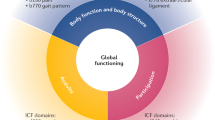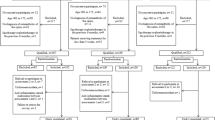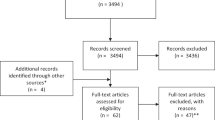Abstract
Ankylosing spondylitis (AS) can have important socioeconomic consequences for individual patients and for society, as symptoms usually appear in the third decade of life. When compared with those of the general population, employment rates for AS patients are significantly decreased in men, but not in women; however, both sexes experience increased AS-related (partial) work disability. In addition, changes in type of work, working hours, and the need for help might be required. AS-related sick leave in patients in paid work varies between 6.5 and 18 days per patient per year. Between 15% and 20% of AS patients require help from relatives or friends to complete unpaid tasks. The majority of the direct health-care costs related to AS are incurred by hospitalizations, physiotherapy, informal care, and drugs. High disease activity and poor physical function are the most important factors associated with the total costs of AS. Cost-effectiveness analyses for different AS therapies have shown variable results. The use of different methodologic approaches to assess the cost-effectiveness ratios makes the findings of such analyses difficult to compare with each other. This article examines the effect of AS on work participation, costs of illness and reviews cost-effectiveness analyses of AS treatments.
Key Points
-
Work participation in patients with ankylosing spondylitis varies among countries
-
In Europe, employment rates for ankylosing spondylitis patients are significantly decreased in men, but not in women when compared with those of the general population
-
Work disability is increased in both sexes when compared with the general population
-
Ankylosing spondylitis patients with paid jobs take more days of sick leave than members of the general population
-
Direct health-care costs related to ankylosing spondylitis are incurred by hospitalizations, physiotherapy, informal care, and drugs
-
Higher disease activity and worse physical function are associated with higher costs of illness
-
Cost-effectiveness studies differ methodologically
This is a preview of subscription content, access via your institution
Access options
Subscribe to this journal
Receive 12 print issues and online access
$209.00 per year
only $17.42 per issue
Buy this article
- Purchase on Springer Link
- Instant access to full article PDF
Prices may be subject to local taxes which are calculated during checkout

Similar content being viewed by others
References
van der Linden SM et al. (1984) The risk of developing ankylosing spondylitis in HLA-B27 positive individuals. A comparison of relatives of spondylitis patients with the general population. Arthritis Rheum 27: 241–249
Braun J et al. (1998) Prevalence of spondylarthropathies in HLA-B27 positive and negative blood donors. Arthritis Rheum 41: 58–67
Akkoc N and Khan MA (2005) Overestimation of the prevalence of ankylosing spondylitis in the Berlin study: comment on the article by Braun et al. Arthritis Rheum 52: 4048–4049
Stucki G et al. (2002) Application of the International Classification of Functioning, Disability and Health (ICF) in clinical practice. Disabil Rehabil 24: 281–282
World Health Organisation (2001) International Classification of Functioning, Disability and Health. Geneva: WHO
Braun J et al. (2002) Treatment of active ankylosing spondylitis with infliximab: a randomised controlled multicentre trial. Lancet 359: 1187–1193
Brandt J et al. (2003) Six-month results of a double-blind, placebo-controlled trial of etanercept treatment in patients with active ankylosing spondylitis. Arthritis Rheum 48: 1667–1675
Davis JC Jr et al. (2003) Recombinant human tumor necrosis factor receptor (etanercept) for treating ankylosing spondylitis: a randomized, controlled trial. Arthritis Rheum 48: 3230–3236
Gorman JD et al. (2002) Treatment of ankylosing spondylitis by inhibition of tumor necrosis factor alpha. NEJM 346: 1349–1356
Calin A et al. (2004) Outcomes of a multicentre randomised clinical trial of etanercept to treat ankylosing spondylitis. Ann Rheum Dis 63: 1594–1600
van der Heijde D et al. (2005) Efficacy and safety of infliximab in patients with ankylosing spondylitis: results of a randomized, placebo-controlled trial (ASSERT). Arthritis Rheum 52: 582–591
Boonen A et al. (2001) Work status and its determinants among patients with ankylosing spondylitis. A systematic literature review. J Rheumatol 28: 1056–1062
Gran JT and Husby G (1984) Ankylosing spondylitis: a comparative study of patients in an epidemiological survey, and those admitted to a department of rheumatology. J Rheumatol 11: 788–793
Lehtinen K (1983) 76 patients with ankylosing spondylitis seen after 30 years of disease. Scand J Rheumatol 12: 5–11
Guillemin F et al. (1990) Long-term disability and prolonged sick leaves as outcome measurements in ankylosing spondylitis. Possible predictive factors. Arthritis Rheum 33: 1001–1006
Boonen A et al. (2001) Employment, work disability, and work days lost in patients with ankylosing spondylitis: a cross sectional study of Dutch patients. Ann Rheum Dis 60: 353–358
Boonen A et al. (2001) Withdrawal from labour force due to work disability in patients with ankylosing spondylitis. Ann Rheum Dis 60: 1033–1039
Boonen A et al. (2002) Work status and productivity costs due to ankylosing spondylitis: comparison of three European countries. Ann Rheum Dis 61: 429–437
Barlow JH et al. (2001) Work disability among patients with ankylosing spondylitis. Arthritis Care Res 45: 424–429
Mau W et al. (2005) Employment across chronic inflammatory rheumatic diseases and comparison with the general population. J Rheumatol 32: 721–728
Zink A et al. (2000) Disability and handicap in rheumatoid arthritis and ankylosing spondylitis. Results from the German rheumatological database. German Collaborative Arthritis Centers. J Rheumatol 27: 613–622
Ward M and Kuzis S (2001) Risk Factors for Work disability in Patients with Ankylosing Spndylitis. J Rheumatol 28: 315–321
Wordsworth BP and Mowat AG (1986) A review of 100 patients with ankylosing spondylitis with particular reference to socio-economic effects. Br J Rheumatol 25: 175–180
Kobelt G et al. (2004) The burden of ankylosing spondylitis and the cost-effectiveness of treatment with infliximab (Remicade(R)). Rheumatology (Oxford) 43: 1158–1166
Kobelt G et al. (2006) Costs and quality of life of patients with ankylosing spondylitis in Canada. J Rheumatol 33: 289–295
Boonen A et al. (2003) Direct costs of ankylosing spondylitis and its determinants: an analysis among three European countries. Ann Rheum Dis 62: 732–740
Boonen A et al. (2005) Large differences in cost of illness and wellbeing between patients with fibromyalgia, chronic low back pain, or ankylosing spondylitis. Ann Rheum Dis 64: 396–402
Ward MM (2002) Functional disability predicts total costs in patients with ankylosing spondylitis. Arthr Rheum 46: 223–231
Boonen A and van der Heijde D (2005) Review of the cost of illness of ankylosing spondylitis and methodological notes. Expert Rev Pharmacoeconomics Outcomes Res 5: 163–181
Van Tubergen A et al. (2002) Cost effectiveness of combined spa-exercise therapy in ankylosing spondylitis: a randomized controlled trial. Arthritis Rheum 47: 459–467
Kobelt G et al. (2006) The cost-effectiveness of infliximab (Remicade®) in the treatment of ankylosing spondylitis in Canada. J Rheumatol 33: 732–740
Boonen A et al. (2006) Markov model into the cost-utility of etanercept and infliximab in patients with active ankylosing spondylitis. Annals Rheum Dis 65: 201–208
Calin A et al. (1994) A new approach to defining functional ability in ankylosing spondylitis: the development of the Bath Ankylosing Spondylitis Functional Index. J Rheumatol 21: 2281–2285
Garrett S et al. (1994) A new approach to defining disease status in ankylosing spondylitis: the Bath Ankylosing Spondylitis Disease Activity Index. J Rheumatol 21: 2286–2291
EuroQol Group (1990) EuroQol: a new facility for the measurement of health-related quality of life. Health Policy 16: 199–208
van Echteld I et al. Identification of the most common problems by patients with ankylosing spondylitis using the International Classification of Functioning, Disability and Health. J Rheumatol, in press
Author information
Authors and Affiliations
Ethics declarations
Competing interests
The author declares no competing financial interests.
Supplementary information
Rights and permissions
About this article
Cite this article
Boonen, A. A review of work-participation, cost-of-illness and cost-effectiveness studies in ankylosing spondylitis. Nat Rev Rheumatol 2, 546–553 (2006). https://doi.org/10.1038/ncprheum0297
Received:
Accepted:
Issue Date:
DOI: https://doi.org/10.1038/ncprheum0297
This article is cited by
-
Poor work outcomes in patients with spondyloarthritis: causes, consequences, and solutions
Clinical Rheumatology (2022)
-
The effects of golimumab on work productivity and quality of life among work-active axial spondyloarthritis and psoriatic arthritis patients treated in the routine care in Greece: the ‘GO-UP’ study
Quality of Life Research (2022)
-
Single nucleotide polymorphisms of TRAF2 and TRAF5 gene in ankylosing spondylitis: a case–control study
Clinical and Experimental Medicine (2021)
-
Krankheitskosten bei axialer Spondyloarthritis für Patienten mit und ohne Tumor-Nekrose-Faktor-Inhibitor-Behandlung: Ergebnisse einer Routinedatenanalyse
Zeitschrift für Rheumatologie (2020)
-
Healthcare Utilization and Direct Costs in Patients with Ankylosing Spondylitis Using a Large US Administrative Claims Database
Rheumatology and Therapy (2018)



